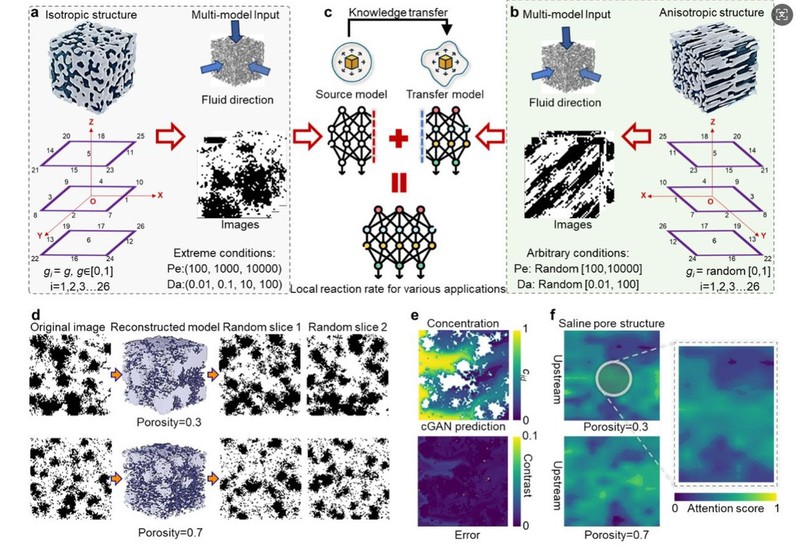Professor You Shijie's team from the School of Environment at Harbin Institute of Technology (HIT) has recently made significant progress in the fields of deep learning, computer vision, and transfer learning for visualizing catalytic reaction transport.
Its research findings were published in Nature Communications under the title "Visualizing nexus of porous architecture and reactive transport in heterogeneous catalysis by deep learning computer vision and transfer learning".
The reaction efficiency of heterogeneous catalysis is highly dependent on the composition of porous catalysts and the complex microstructure inside. However, accurately analyzing the relationship between structure and performance, particularly quantifying local reactive transport processes in 3D space, has long posed a major challenge for the scientific community. Traditional experimental and simulation methods are not only costly and time-consuming but also struggle to capture the dynamic details of reaction processes, thereby limiting the design and development of high-performance catalysts.

Model framework and workflow of cGAN-TL
To address this challenge, Professor You's team proposed a novel deep learning computer vision (DLCV) method that integrates conditional generative adversarial networks (cGAN) with feature representation transfer (FRT). This method uses a 3D reconstruction network to restore the internal 3D structure of catalysts from 2D side-view images and predicts local reaction rate distribution under reaction conditions, achieving a map from 2D images to 3D local reaction information. DLCV recognizes pore throats, tortuous flow paths, fractal channels, and their combined structures through attention mechanisms, and combines them with synergetics to make it possible to visualize catalytic reaction kinetics. This demonstrates AI’s potential in solving complex scientific problems and suggests a shift in catalyst research from the traditional trial-and-error method to an efficient AI-driven design paradigm.
In the future, this method is expected to be extended to broader application scenarios such as fuel cells, providing robust theoretical and technical support to address global energy and environmental challenges.
Link to paper:https://www.nature.com/articles/s41467-025-63481-4

